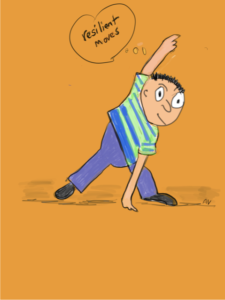
“She stood in the storm and when the wind did not blow her away, she adjusted her sails.”—Elizabeth Edwards
The head of Learning and Development of a large organization asked, “Are your other clients experiencing the same level of stress as our leaders?” Her organization, like most these days, is experiencing significant disruption. Most feel overwhelmed as they try to keep up with the current workload, create a new direction, and respond to changing market conditions and the introduction of new technology while supporting others.
Many leaders are stressed and overwhelmed. They are working long hours and don’t see a light at the end of the tunnel. Some are opting to leave stressful environments. Others are building their resilience strategies and are positively influencing others.
We all face challenges and setbacks in the workplace and in other dimensions of our lives. Resilience is our capacity to respond to these pressures and disappointments effectively.
It is important to reflect and reframe your mindset regarding the stressful time and to develop some habits that keep you present and grounded to see what needs to be done and what can be let go. (I find that often leaders fail to consider what not do.)
Each of my clients develops their own ritual or practice. For example, you can start your day visualizing positive and productive interactions rather than focusing on how hard things are. You can ground yourself by noticing your feet and taking some long deep breaths to feel centered. Then remind yourself that “things are working out”and if things don’t go exactly as you want, you will learn and make things work. It is useful to remember that life is a growth opportunity and that we learn the most when we face such challenges. You can also be grateful that you have a job, home, health etc.
It is also important to check in with yourself and make sure you are taking care of yourself. The basics are vital—getting enough sleep, eating nourishing food, moving and connecting with friends and engaging in real conversations. Giving and receiving empathy and being vulnerable creates community and lightens our load.
Take time to identify what fortifies you and eases your stress and follow your resilience strategy. Engage a friend to track your progress and learning. I wish you ease.
Contact us at any time.


 “There is a river flowing very fast. It is so great and swift that there are those who will be afraid. They will try to hold onto the shore. They will feel torn apart and suffer greatly.
“There is a river flowing very fast. It is so great and swift that there are those who will be afraid. They will try to hold onto the shore. They will feel torn apart and suffer greatly.